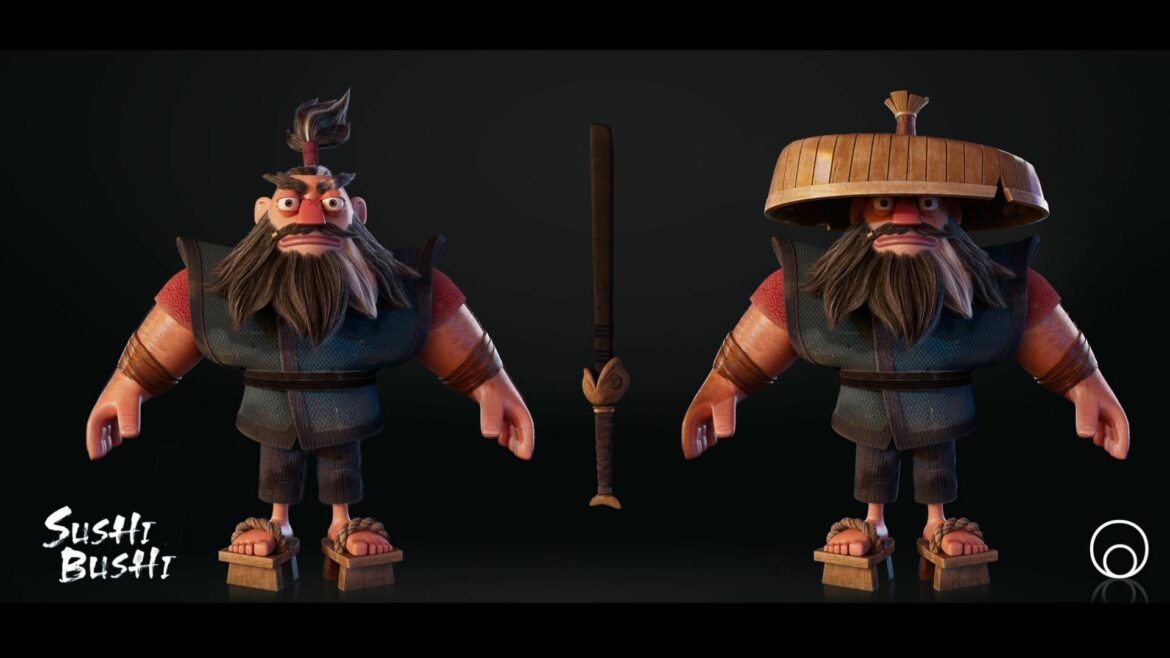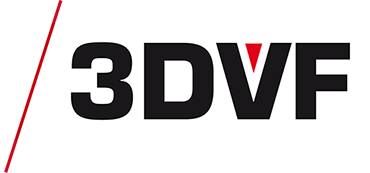This article is also available in:
![]() Français
Français
Ten years ago, we interviewed Hugo Cierzniak about his short film Dip N’Dance. In this new article, we discuss his latest short: Sushi Bushi, created in collaboration with Wizz and NoOne!
Here is the film, followed by the interview.
3DVF: Can you tell us more about the concept behind Sushi Bushi and how the short film came about?
Hugo Cierzniak: You know when you’re suddenly inspired and find yourself in that situation where you think, “Oh, that could be fun to do”? Well, if there’s one piece of advice I can give to anyone reading this article, it’s this: WRITE IT DOWN!
Don’t let that moment pass by thinking, “I’ll write it down later” (spoiler alert: you’ll forget to do it).
This idea is part of a database that I’ve been feeding for years and it really contains a lot of things (some good and some not so good, but I own it). John Cleese says, “Creativity is not a talent, it’s a way of operating.” I agree with him, and my way of operating is to be attentive and write down EVERYTHING that inspires me.
So, one evening in front of a plate of sushi I thought, “Haha, it would be funny to think that a samurai master actually hunted the salmon in our plate, sliced it for the whole restaurant, and that’s his life.” Yes, it’s funny… and we could quickly move on to something else. But I jot down such ideas before moving on. And luckily, this idea came to life years later, and I’m thrilled that Sushi Bushi exists today!
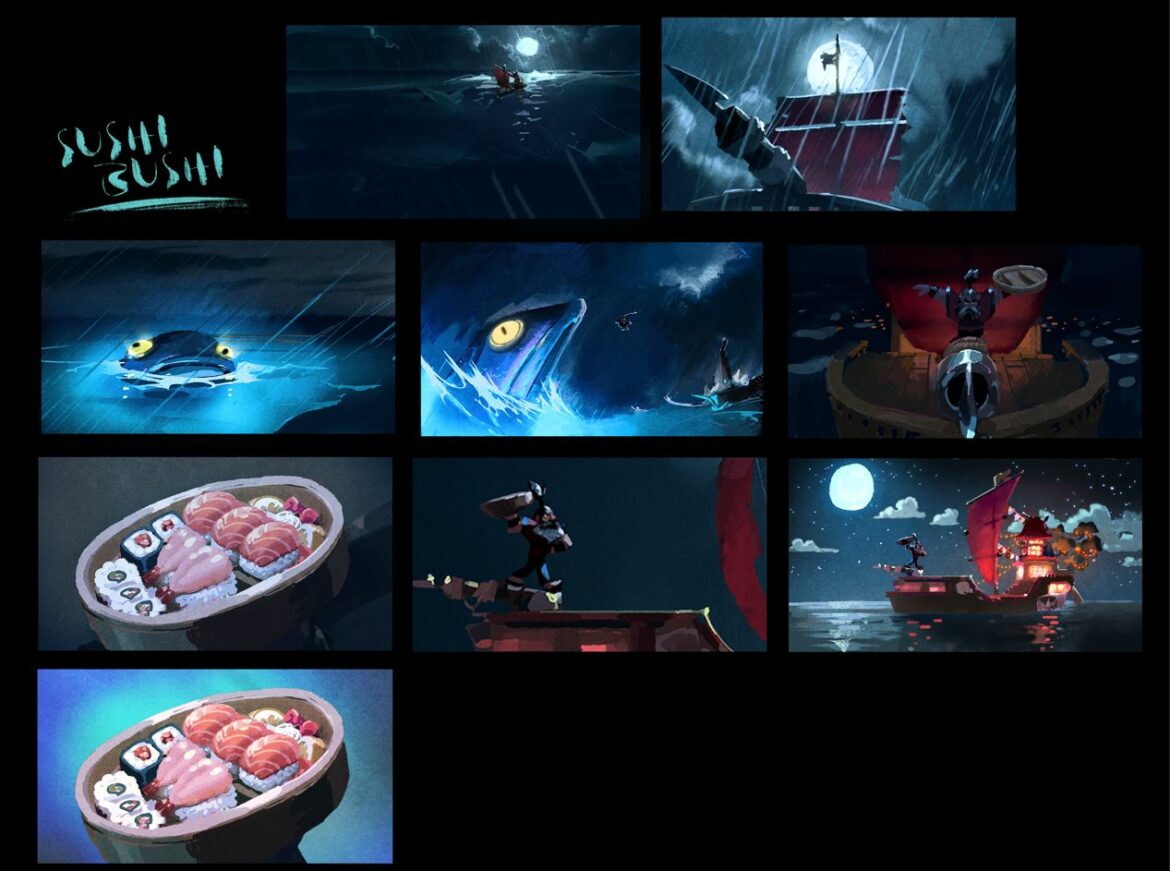
3DVF: Wizz‘s involvement makes sense since you’ve been working with them for a few years, but how did NoOne get involved?
Hugo Cierzniak: I’ve been working as a storyboard artist with directors from Wizz (mainly Patagraph and Illogic) for a few years, and I offered my services as a director. Since we get along well, they warmly welcomed the proposal. They let me know that if I had an idea for a very short film that could showcase “my talents,” we could discuss it.
Then, I knew we’d have to make this film in 3D, and I already had a desire for a cartoon design with a more realistic rendering, so I would need to find a studio. Over the past few years, I had collaborated quite a bit with NoOne as an animation director on their keyframe projects (Gates of Eternity, Puzzle Royal, Aether), and it went very well, especially with Xavier Bernardelli, a talented 3D animator!
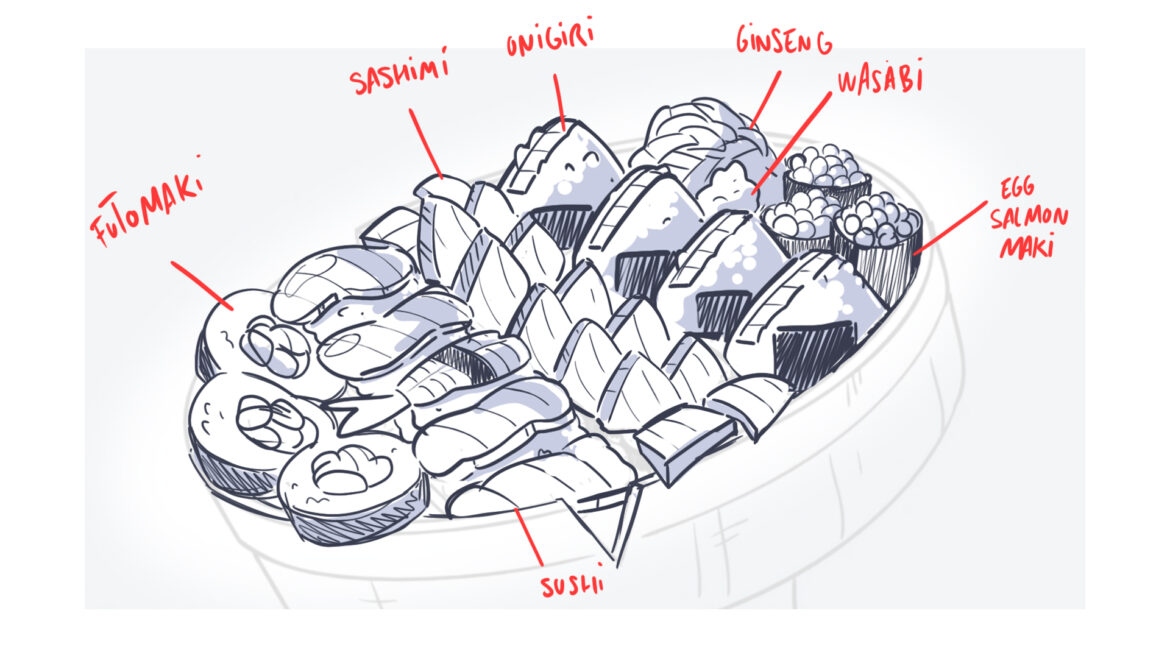
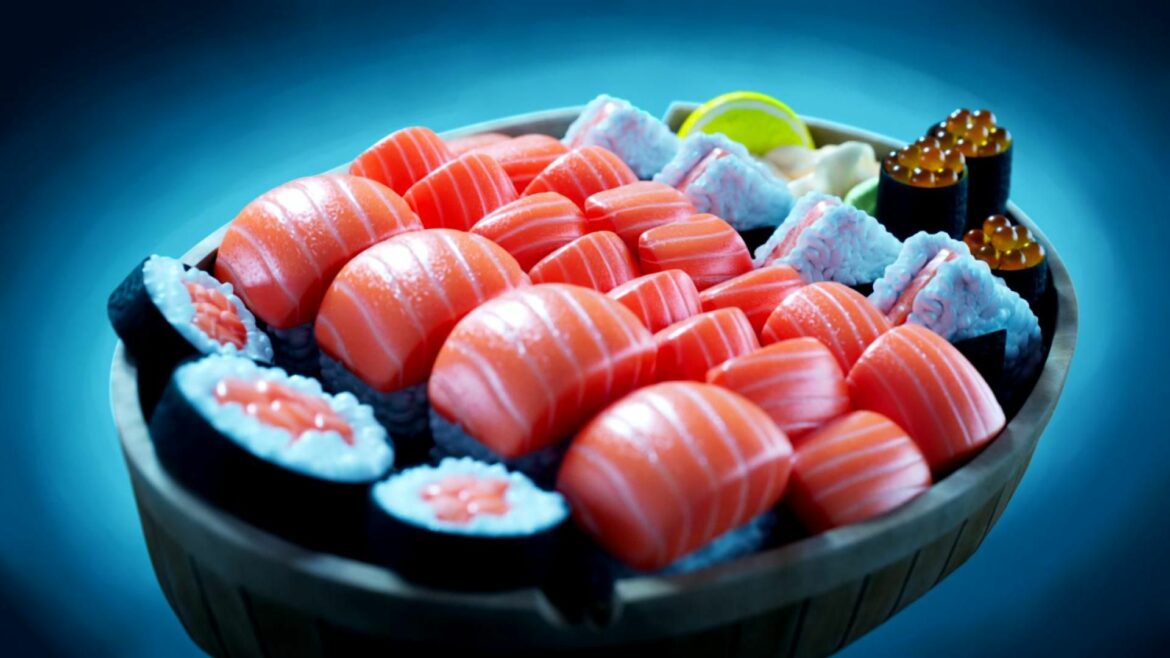
I then dove into my idea database and selected 3 that seemed doable. I discussed them with Clément Martin, a co-founder of NoOne, with whom I had also worked at Unit Image years before and who shares a love for short projects. Clearly, Sushi Bushi stood out. It boiled down to an epic battle between a samurai and a giant salmon (I definitely had Captain Ahab vs. Moby Dick in mind) and the twist that it turned out to be an ad for a sushi restaurant (eventually, Wizz suggested not making it a fake ad but rather a standalone short film). Two characters, few props, one setting, a simple idea: the mix seemed perfect to launch this project.
NoOne is a studio, but they are also represented as directors at Passion Pictures and are known for making hyper-realistic projects (often in motion capture). We had a good win-win deal – as they say in ad agencies. This film would serve as my calling card to be represented as a director, and they could have a more cartoon-like film in their demo reel to aim for a broader range of bids with Passion Pictures.
I bring the project, the tone, the pace, and the keyframe animation, and they contribute the film’s production with the hyper-realistic renders that characterize them.

3DVF: How were the roles distributed between Wizz and NoOne?
Hugo Cierzniak: NoOne is a co-producer in the sense that they made an industry contribution by creating the entire short film in 3D. They took care of their own salary, machines, premises, licenses, the salary of the 3D animator (Xavier Bernardelli), and the interns working for them (Alex Mazire and Mathis Boumedjmadjen).
Wizz contributed financially in a symbolic way to this effort and took care of everything that wasn’t CG. Namely, the remuneration of the character & props designer (Adrien Gault), the color script (Simon Dumonceau), the 2D FX (Thomas Ramon), the concepts of the credits as well as the compositing work for the credits (Marvin Chen), and everything related to music, voices, and mixing (Kilian Arzel with his studio Wheel Creation).
I take this opportunity once again to thank everyone for their excellent work and the effort they made in terms of remuneration because despite their experience, they all made an effort to make this film possible with the budget of a short film.
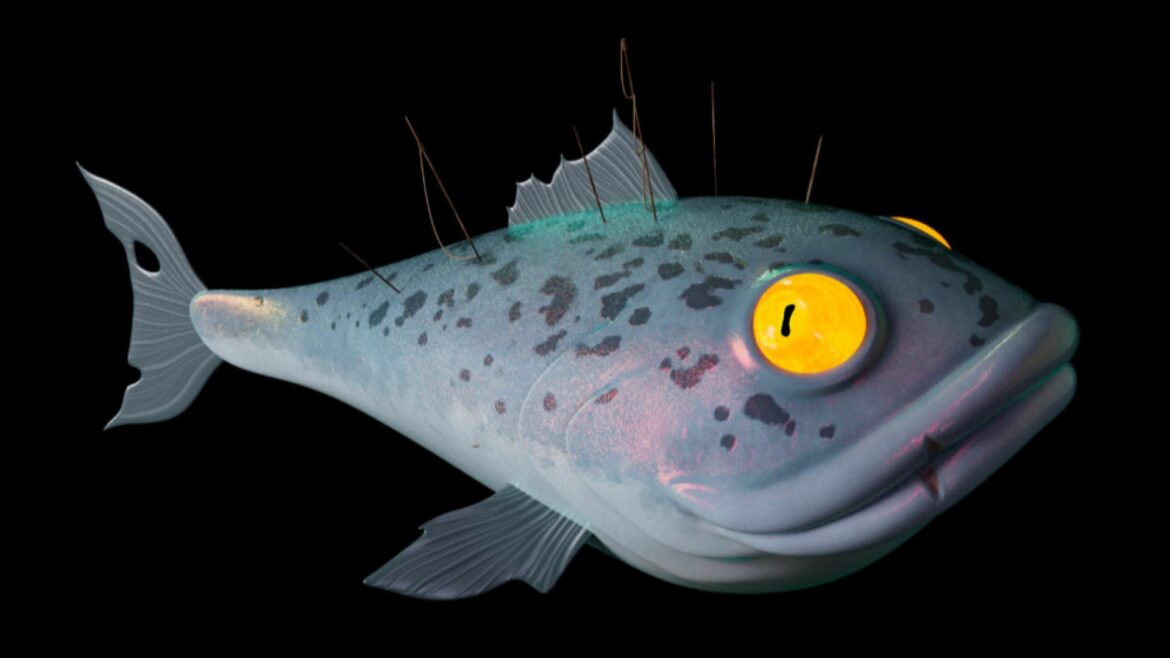
3DVF: What were the biggest technical/artistic challenges while working on Sushi Bushi?
Hugo Cierzniak: The BIGGEST technical challenge was water, by far. We don’t see it much and it’s never REALLY highlighted, but the simulations of waves and the sea (as well as the related software crashes) were the biggest technical challenge. I think we lacked a 3D FX artist, but we didn’t have the budget for it, so Clément Martin took the issue head-on and brilliantly overcame the challenge.
3DVF: Could you share some insights about the main character, the character design, and the animation?
Hugo Cierzniak: I find that the creation of this character is the most successful thing in this film. So successful that I would love to see the continuation of his adventures, and I am frustrated not to see him come to life longer. I had a pretty clear idea of a kind of super badass ronin in a cartoon style. I wanted him to have a mission to kill this mythical creature like Captain Ahab who hunts Moby Dick but as a samurai version. I hesitated for a while to give him a wooden leg. I liked the idea of a topknot with a big bushy beard, the hat for the mysterious aspect, the getas (traditional wooden shoes), and of course, the katana. I visualized the character and came with a proposal to Wizz.
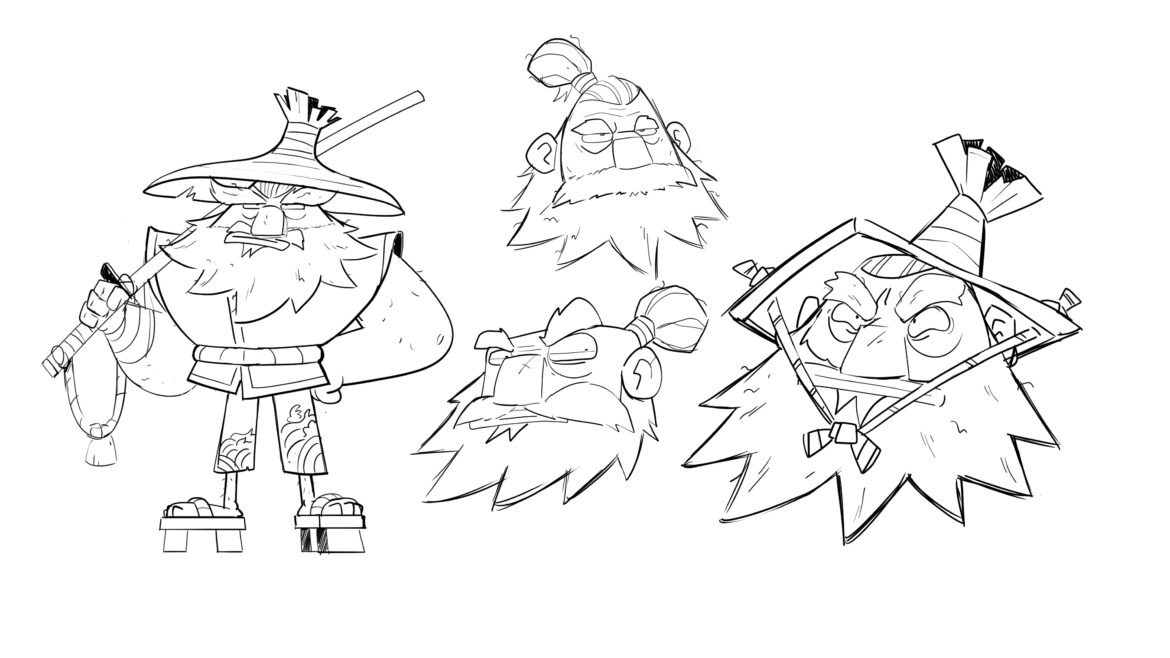
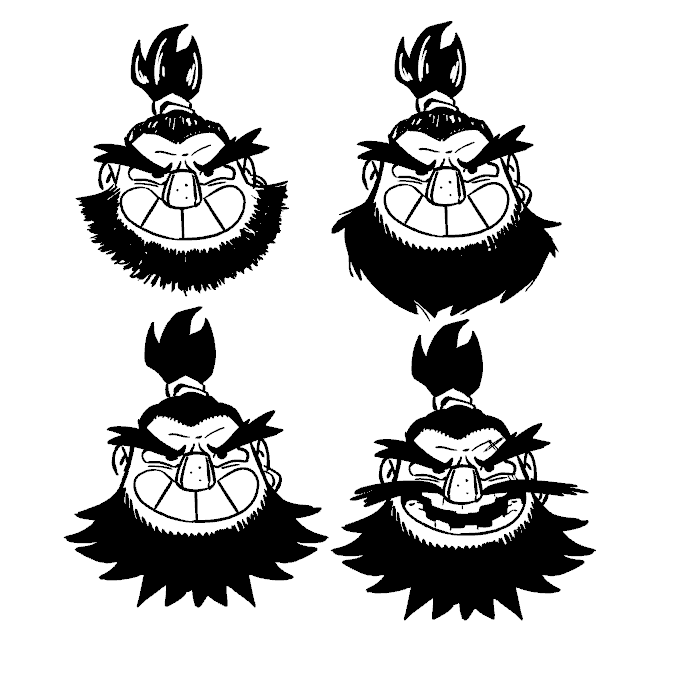
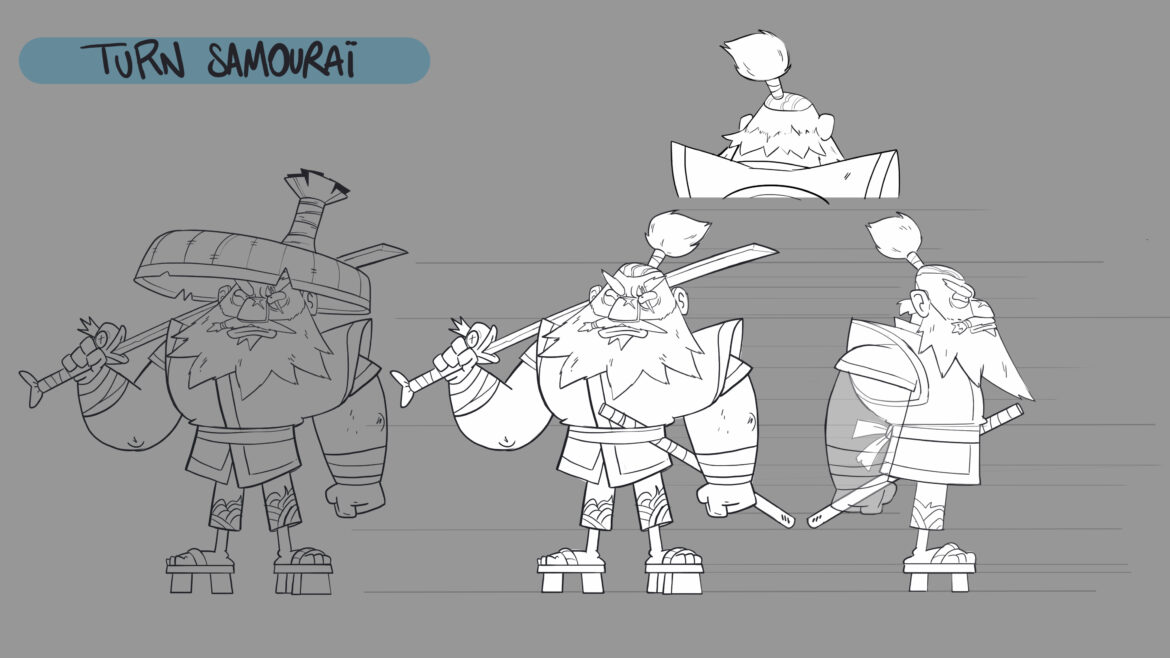
They approved the vibe of the character and the overall intention, but as for the design, they asked me to revise my sheet by finding someone who is actually a character designer. Thrilled with their suggestion (since I was hesitant to ask for external services knowing it would involve a budget), I approached Adrien Gault with whom I had the chance to work just before on the Alex Player series project. We got along well, and I loved his design style. What I didn’t know when I made this proposal—and it’s good to be a bit lucky sometimes—is that Adrien is a huge fan of Japan and its entire culture!
After I pitched him the project and intentions, he said: Look no further dude, I’m your man!
He immediately understood the intention and produced amazing boards that not only enhanced the basic idea but also brought in new ideas! The fact that his own hat was the sushi tray, that there were remnants of weapons from former hunters embedded in the salmon fish, and the giant bonsai at the back of the boat, that was his doing.
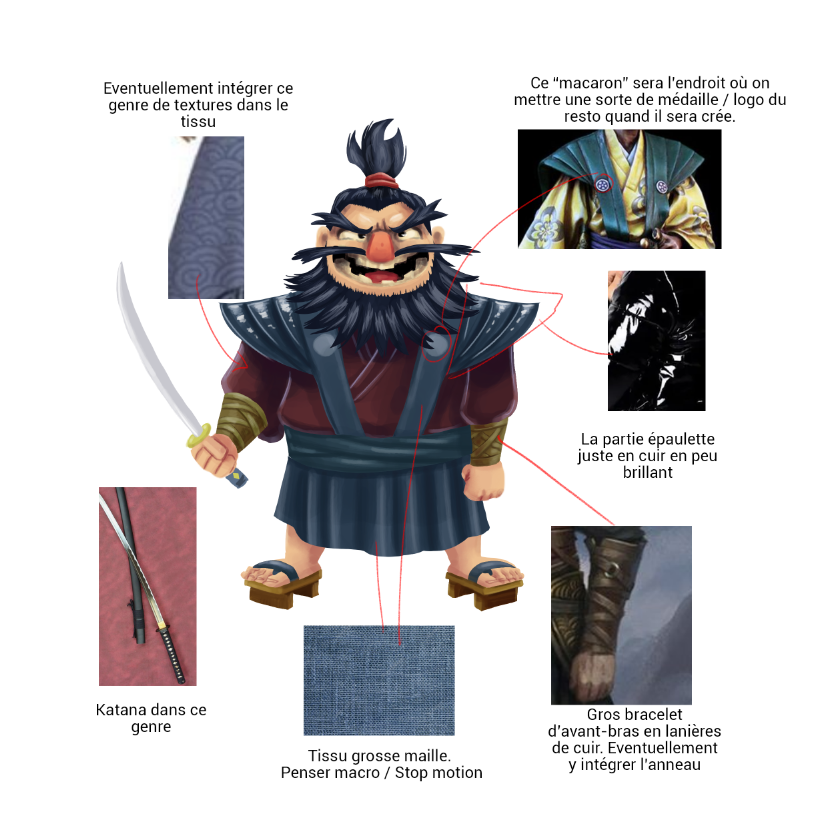
Then we fumbled a bit in 3D to give it volume, but I already had a “simple” system in mind to allow maximum freedom for the animation. So Alex Mazire took care of it, and the development look that was done afterward quickly brought everyone to agreement.
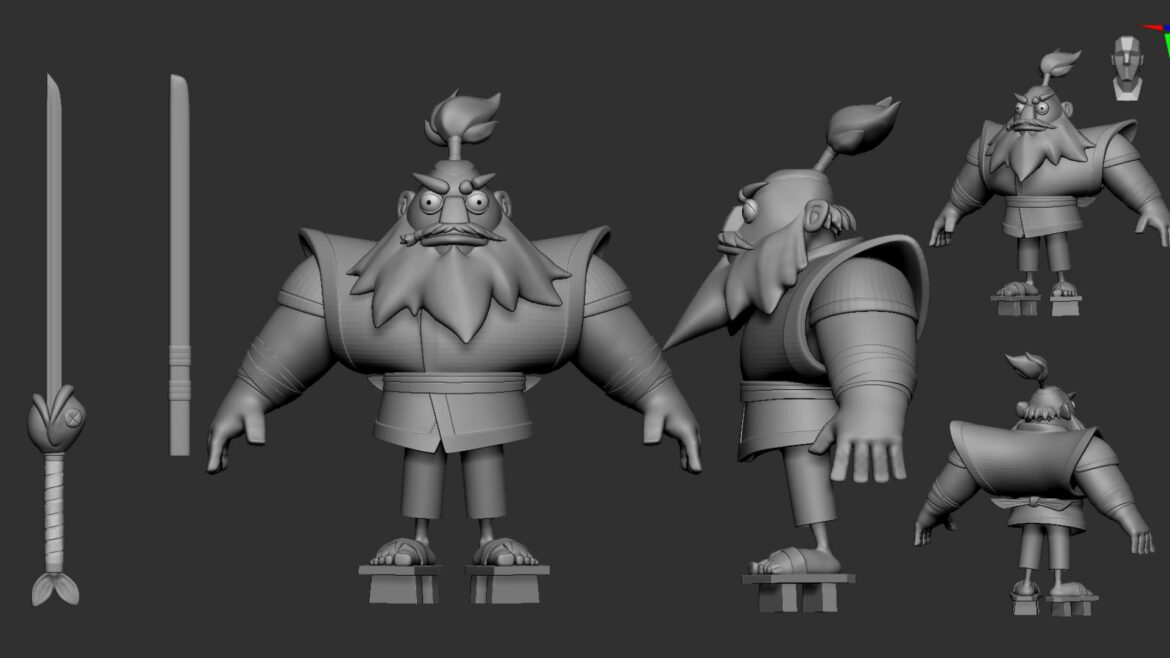
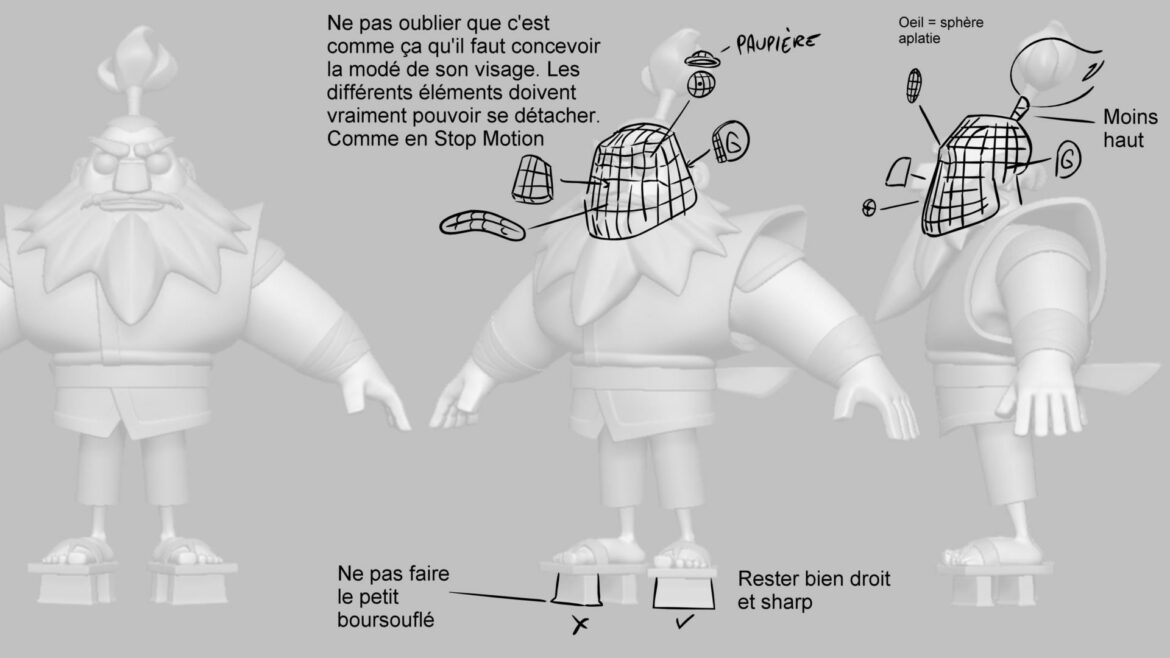
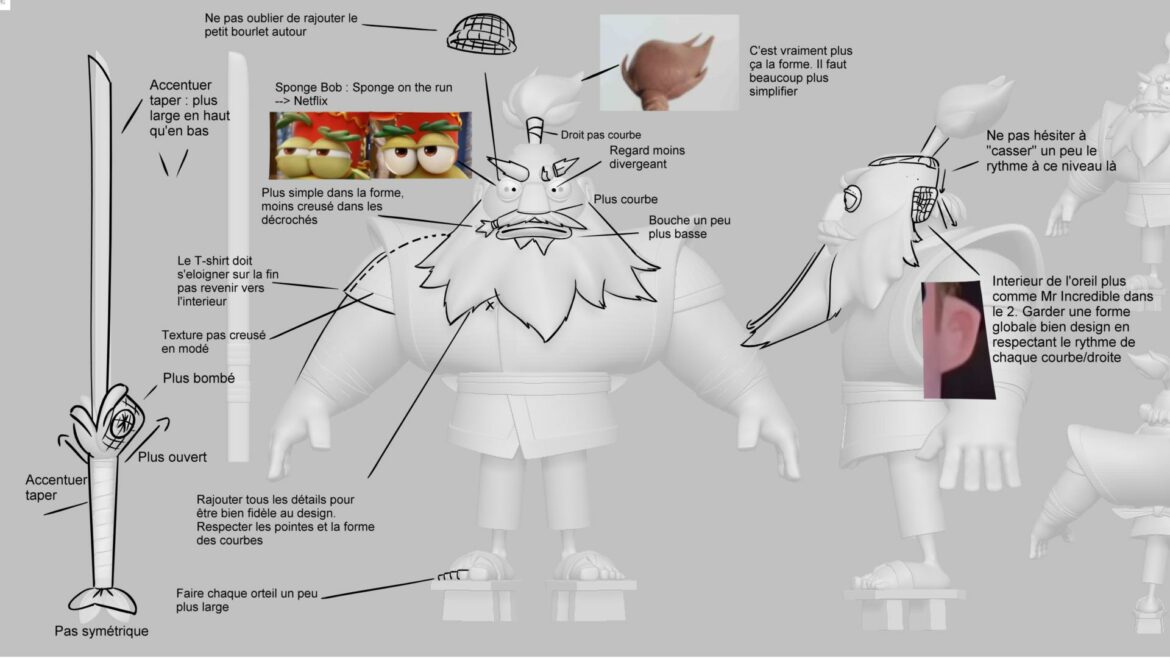
And for the animation, I obviously called on Xavier Bernardelli because we had already completed several projects together with NoOne, so we weren’t going to change a winning team. He was there and excelled by creating some truly killer animation! I hope we’ll have other opportunities to bring this samurai to life again.
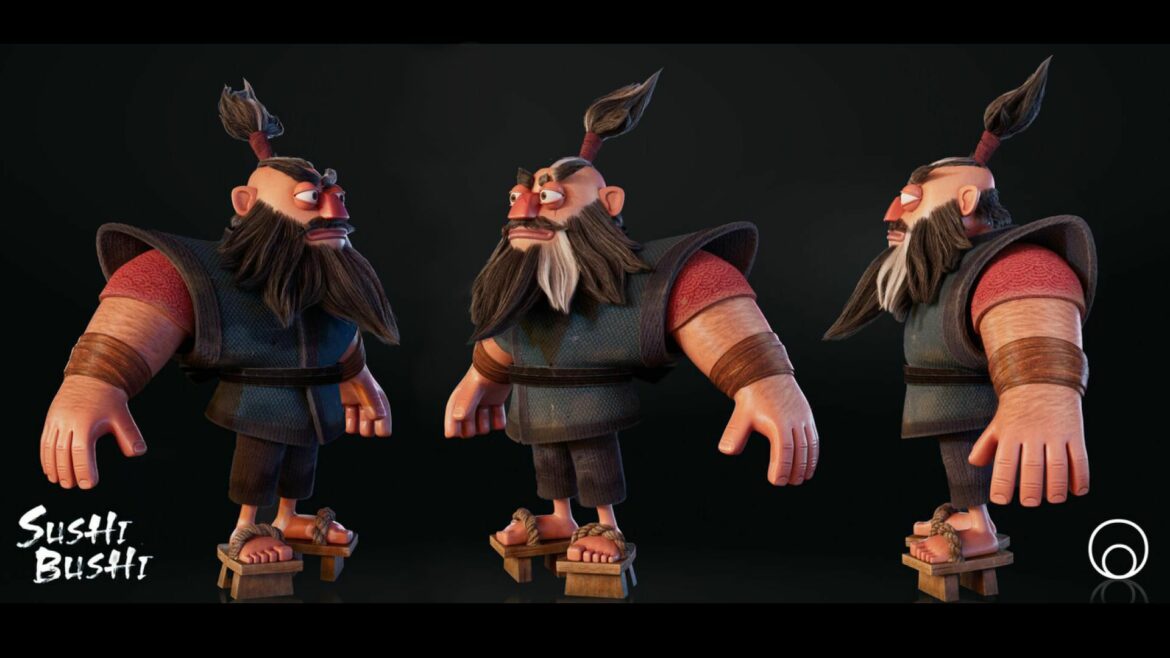
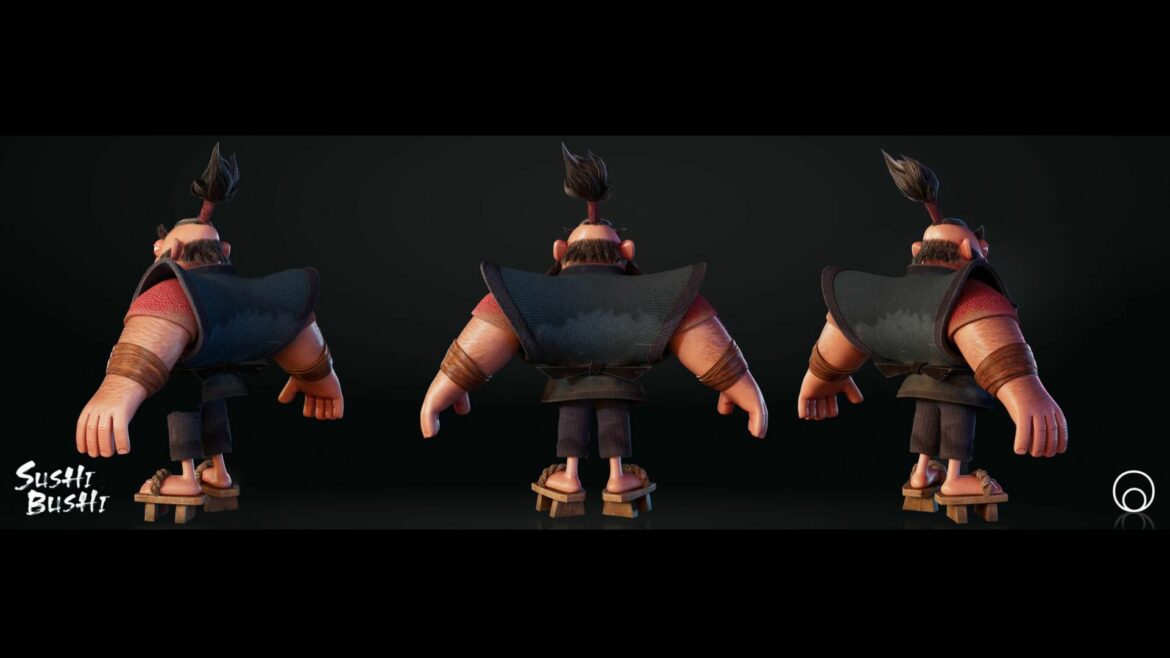
3DVF: We noticed the team used FX animated in 2D for Sushi Bushi. Why did you avoid using 3D FX for this part of the short film?
Hugo Cierzniak: That’s where we touch on “original solutions.” As I mentioned earlier, we didn’t have the budget to hire a 3D FX artist. We knew we couldn’t avoid creating 3D waves unless we put another system in place. That could have been an option, but it meant starting the development of an “original” technique, and no one felt too confident about going down that path. A lot of time and energy for a too uncertain result.
Moreover, the advantage of 2D FX is that we have much more control over them artistically, especially in terms of design. I admit I was a bit afraid of integration because it’s clear it works well when the renders are stylized in 2D (think Arcane, for example), but with a render as realistic as ours, it was much more risky. But hey, the challenge of this film was also to try things and bring something a bit new, so we tried it, and for me, it was a successful bet. I am particularly happy with the cohabitation of the 2D water FX flowing on the fish when it comes out of the water with the “real” 3D water next to it, even though on paper it was not at all certain. The same goes for the glint that travels across the sushi tray or the lightning in the sky. When you don’t have money, it’s good to have ideas!
I take this opportunity to thank Thomas Ramon who did a great job! And I’m also happy with this choice of 2D FX because as we didn’t have the budget for Thomas to do all the FX, it allowed me to get involved and do a few myself, reconnecting a bit with animation, my first love.
Below: animatics
3DVF: The main character, the ship, the fish have very different sizes. How did you approach this aspect in terms of direction?
Hugo Cierzniak: I think it was this difference of size that posed big problems in terms of water simulation. Especially in the foreground where we see the small boat on the big waves. The general idea of the artistic direction was to create something similar to macro/stop-motion. I believe we finally succeded by changing the scale ratio to have much smaller waves (and thus less fine water) which could fit the direction of having a miniature boat rather than a real 20m long boat.
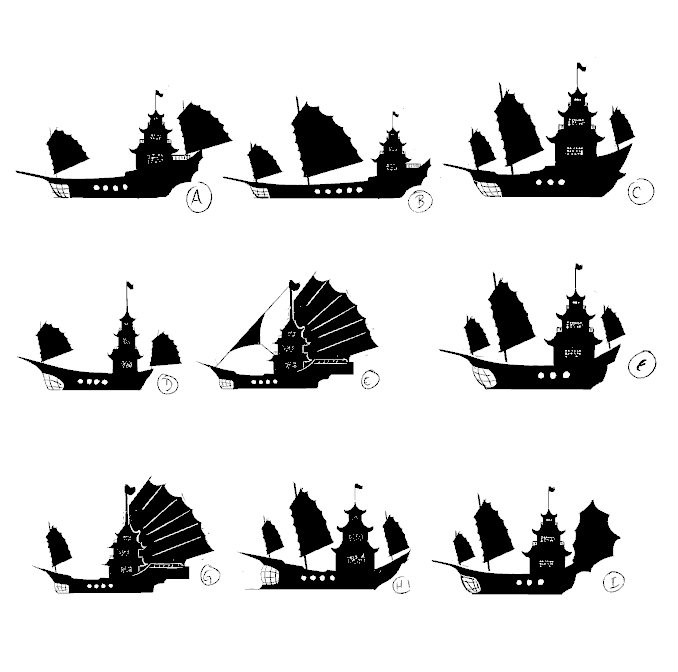
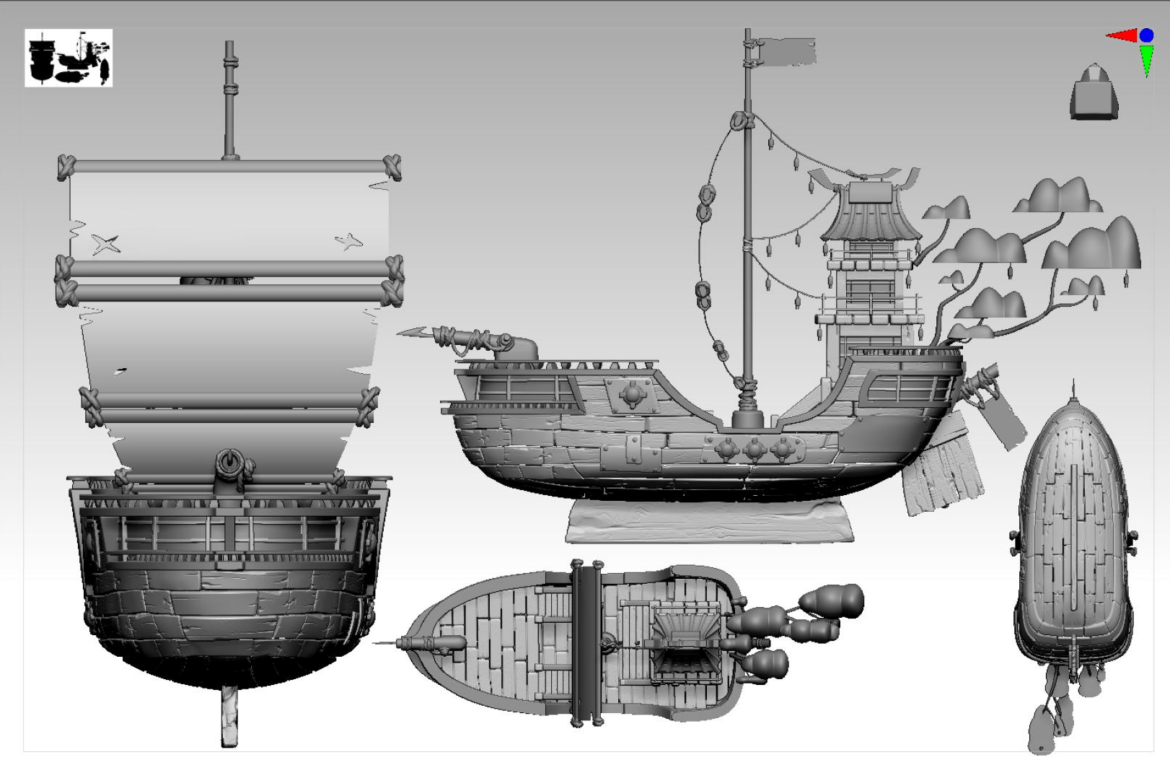
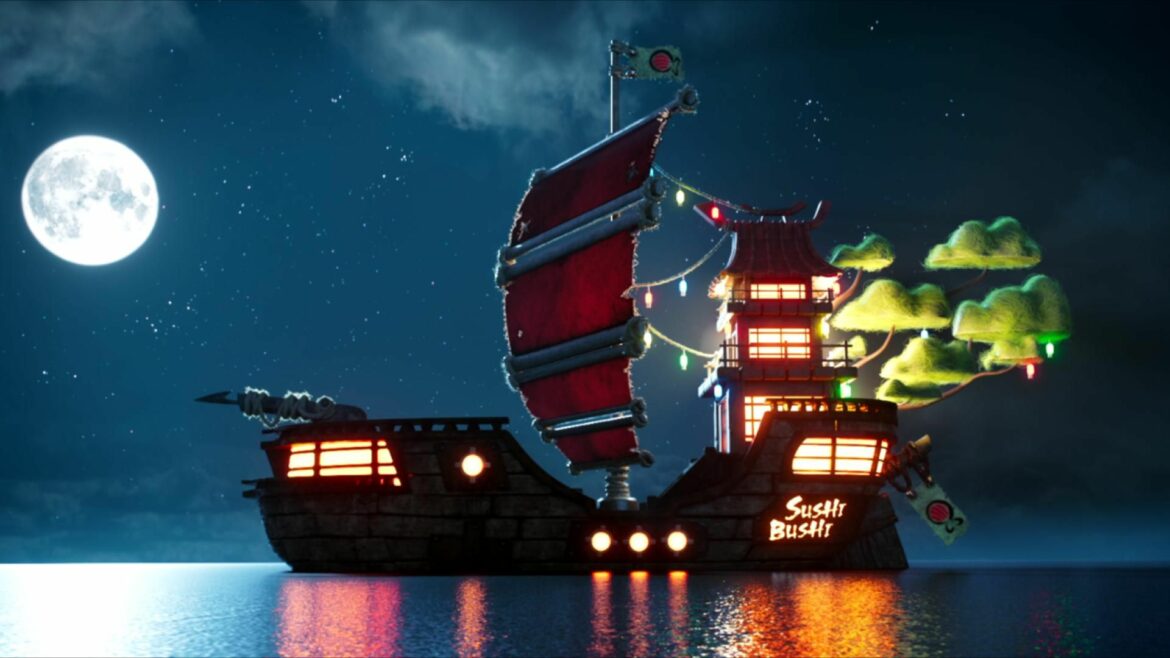
I am thrilled with the slow-mo shot in which the samurai jumps into the mouth of the salmon. That’s precisely the kind of epic shot I had in mind from the beginning of the project, and the fact of having them face to face, with the boat behind, you really feel the scale ratio.
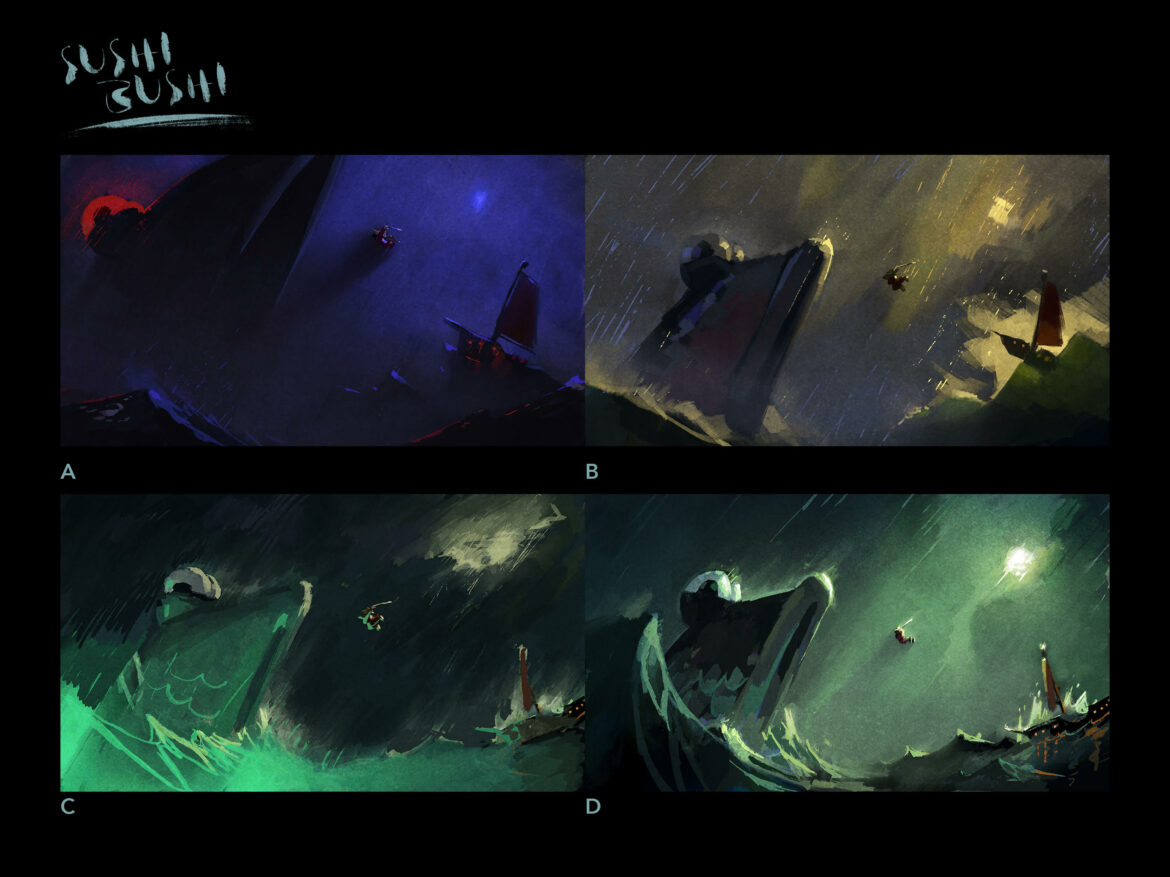

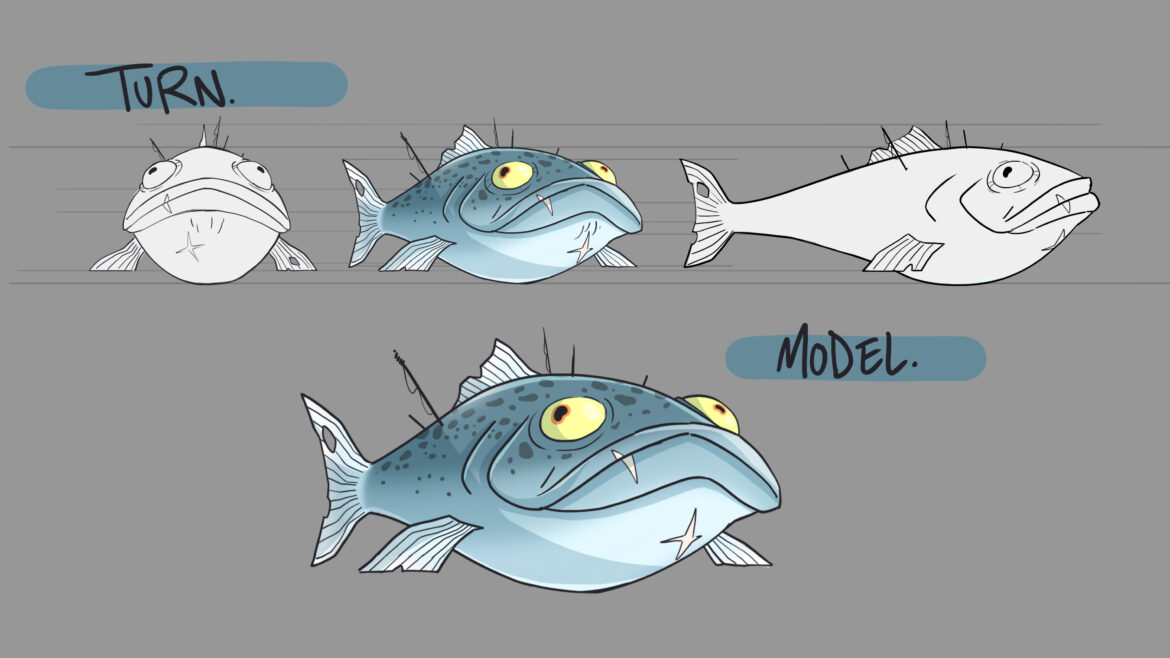
3DVF: What’s yout takeaway following the creation of Sushi Bushi and the collaboration with Wizz/NoOne?
Hugo Cierzniak: I won my bet and I feel the outcome is very positive! I think it’s precisely by working with people from different backgrounds that we manage to propose new things. NoOne adapted to my vision, and Wizz, with its experience, was very good at advising on some directions to take rather than others.
Now, I hope the film will get watched and convince the right people so that I have the opportunity to win projects as a director on bids and maybe team up again with NoOne and Wizz?
3DVF: About ten years ago, we interviewed you about your short film Dip N’Dance (see our article, in French): how have you evolved since then?
Hugo Cierzniak: I secretly hoped that Dip N’Dance would be convincing enough to help me direct other projects. In retrospect, I think I was too passive, waiting for someone to come to me, whereas I should have fought harder by knocking on the doors of studios and production companies, presenting this film. Would it have changed much? I don’t know, but at least I would have known that I tried. I will try to learn from this experience and not make the same mistake with Sushi Bushi.
Animated at Delapost Paris
Nevertheless, Dip N’Dance allowed me at the time—as an animator—to move on to feature films. First at Mikros on Asterix: The Mansions of the Gods, then at Illumination on Minions, The Secret Life of Pets, and then Sing. I returned to Unit Image as an animation director, but after all these years, I realized that animation was not the shortest path to directing despite my main models being Louis Clichy and Benjamin Renner, whom I had identified as two animators. Later, I realized they were not “just” animators but each had a real status as authors with a clear message and identity.
So, in 2018, I switched careers to become a storyboard artist—closer to directors and staging than animation—and since then, I’ve been working on many productions and creating series trailers to position myself as a director. I’m multiplying the possibilities by doing Sushi Bushi today to try my luck on the advertising and music video circuit. But I also have other projects in my files, which I hope will see the light of day in less than 10 years this time!
One last thing. I invite the people reading this article to follow the posts I made (on Instagram and/or LinkedIn) about the making of the short film.
3DVF: Thank you, Hugo, for these answers! We look forward to discovering your next projects.
Follow 3DVF on social networks: LinkedIn, X/Twitter, Facebook, Instagram, YouTube.
